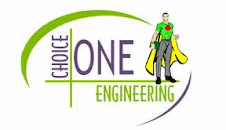Let’s get the setting: We have 34 people to transport from downtown, north about 20 miles to Carmel. We have two 15 passenger vans and a suburban, all with 3/4 of a tank of gas. It was dark, and we were wearing sun glasses (okay well maybe not that part, but you Blues Brothers fans know what I am talking about).
Anyway, yours truly was behind the wheel of one van and leading the second up to Carmel to play laser tag, or so the other passengers thought. What we were really doing was going up to Keystone Parkway to check out the grade separated intersections and the Teardrop Roundabouts that were installed at all cross roads within the city. I had heard and read about this project, but now I was finally getting to see it first-hand. I was in traffic and transportation engineering heaven, but could this truly be? Most traffic engineers work for many years without experiencing such a radical and innovative design. And here I am giddily (and safely of course) maneuvering a 15 passenger van around these teardrops after only a few years of experience. The beauty, the majesty, the capacity, the safety, the efficiency, it just all caught up with me at once and I couldn’t help but shed a teardrop myself.
As much as I may have wanted to keep driving around and around, I could tell my expert navigator (a.k.a. Tony) had other plans, and the passengers in the back were getting restless, so I continued on. To this day, the following events have been disputed, but the fact is that I was putting full trust in my navigator and driving only where I was being told. I can’t be to blame if that direction led us right into three more teardrops. Yeah, I may have enjoyed it much more than the driver of the van following me, but still it wasn’t my choice.
We did finally make it out, and just in time too, as we shortly thereafter had to make an emergency stop because someone in my vehicle couldn’t stand sitting in the back any longer. And though I wasn’t sure we could have any more fun than driving around roundabouts all day, laser tag proved to be much more entertaining for us all.
So if you ever get over to Carmel, Indian, and you have a navigator who is better than any GPS unit, I recommend taking a trip down Keystone Avenue and getting off at a few of the cross roads to check out the teardrops. Until then, check out some of the cool things they did with this project: http://carmellink.org/index.php.
